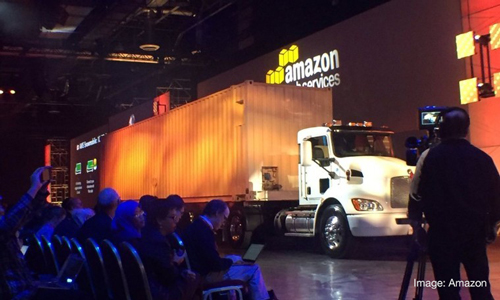“Never underestimate the bandwidth of a station wagon full of tapes rolling down the interstate.” 1
Chapter Nine of “Society’s Genome” discusses the importance of geographic diversity for data preservation. The concept is simple – if one physical site becomes incapacitated, then the other site can be used to restore critical data. Sometimes, even in this age of the Digital Revolution, one of the best methods to move large amounts of data from one physical site to another is to transport it physically on tape media.
Recognizing this, cloud provider Amazon recently announced a curiously corporeal network tool — the Snowmobile.
The tractor-trailer hauls a massive storage device, dubbed Snowmobile, in the form of a 45-foot shipping container that holds 100 petabytes of data. A petabyte is about 1 million gigabytes.
Amazon plans to drive Snowmobiles to its customers’ offices, extract their data, then cruise to an Amazon facility where the information can be transferred to the cloud-computing network in far less time than it would for so much data to travel over the web.

The company, however, isn’t promising lightning speed. Ten Snowmobiles would reduce the time it takes to move an exabyte from on-premises storage to Amazon’s cloud to a little less than six months, from about 26 years using a high-speed internet connection, by the company’s calculations.
This concept is further mentioned in “Society’s Genome”, Chapter Nine, with Randal Munro’s examination of the throughput and speed of the Internet vs. Fed Ex. The exact transfer rate figures might be dated, but the relative ease, speed and affordability of moving media physically versus moving massive amounts of data electronically has not changed.
Score one for physical media, like Spectra’s certified tape media.
1 Andrew Tanenbaum, Computer Networks, 4th ed., (London: Pearson, 1981), 91.
